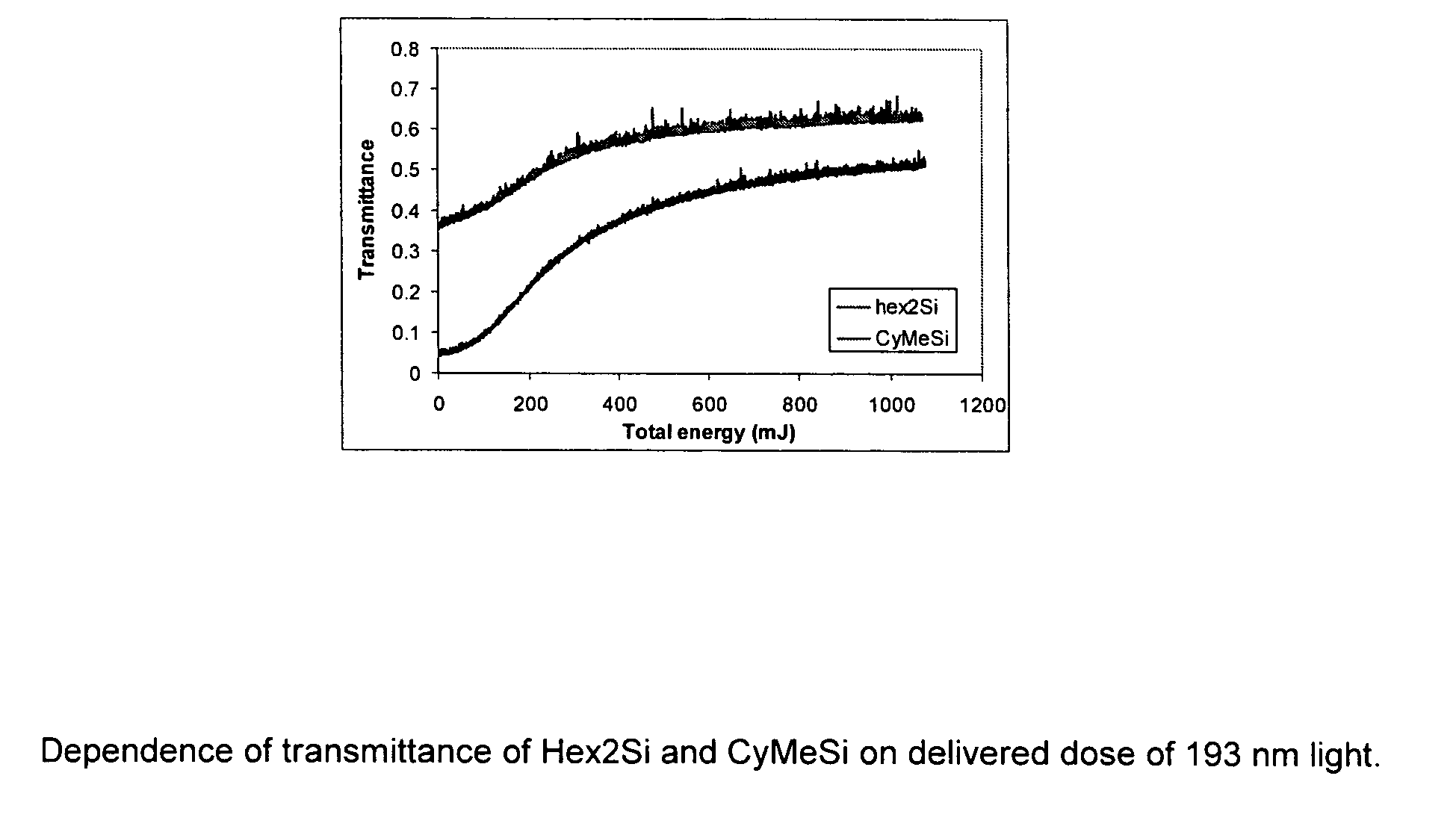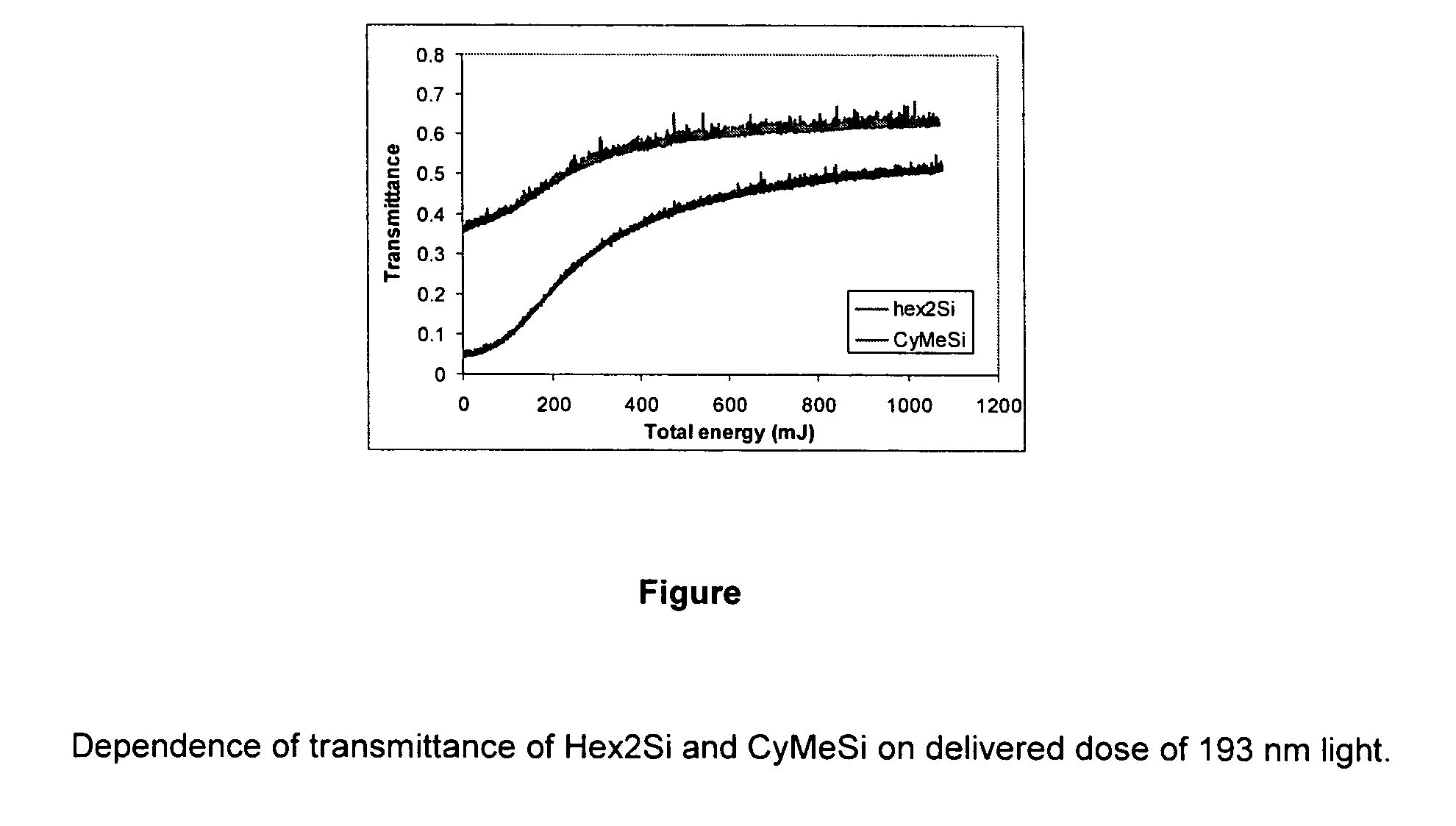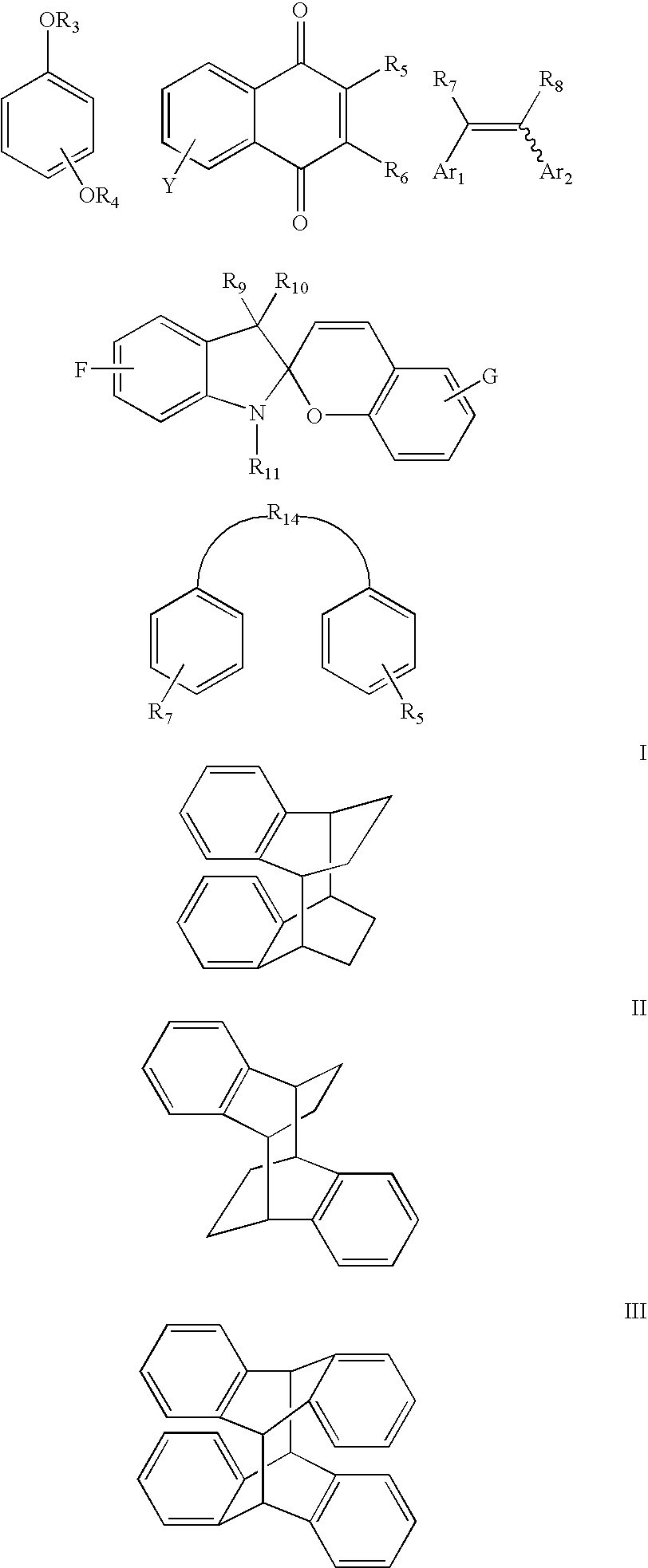Bleachable materials for lithography
a technology of lithography and bleachable materials, applied in the field of photobleachable compounds, can solve the problems of reducing the efficiency of lithography, so as to reduce the time and cost involved, and the effect of facilitating tailoring
- Summary
- Abstract
- Description
- Claims
- Application Information
AI Technical Summary
Benefits of technology
Problems solved by technology
Method used
Image
Examples
example 1
Synthesis of 2,3-dimesityl-2-butene
[0073]1-acetyl-2,4,6-trimethylbenzene (5 mmol, 832 μL) was added to a suspension of Zn (20 mmol, 1.3 g) in tetrahydrofuran (THF, 10 mL) under N2 immersed in an ice bath followed by a toluene solution of TiCl4 (10 mmol, 10 mL of 1M sol.). The reaction mixture was stirred 2 hour at ice-bath temperature and then refluxed for ca. 18 hours. After the reaction mixture had cooled to ambient, 10% aqueous solution of K2CO3 (ca 30 mL) was added and the solution was extracted twice with ether. Combine extract were washed with brine, dried over MgSO4, filtered and evaporated. Chromatography with hexanes on silica gel afforded 250 mg of pure product.
example 2
Synthesis of a Spiropyrane Derivative
[0074]
[0075]2-methylene-1,3,3-trimethylindoline (1.1 mmol, 194 μL) and 2-hydroxy-4-nitrobenzaldehyde (1 mmol, 167 mg) were combined in ethanol (5 mL) and refluxed for 4 hours. Then the solvent was evaporated and the residue chromatographed on silica gel with hexanes with increasing amount of ethyl acetate added (from 0 to 10%). Obtained was 115 mg of product.
example 3
Synthesis of 1,3-di(anthracene-9-yl)-1-propanone
[0076]9-anthraldehyde (10 mmol, 2.06 g) and 9-acetylanthracene (10 mmol, 2.2 g) were combined in dry DMF under N2 and MeONa (28 mmol, 1.5 g) was added. The reaction mixture is stirred overnight. Then MeOH was added (60 mL) and the precipitate was filtered off and vacuum dried to afford 3.73 g of pure 1,3-di(anthracene-9-yl)-2-propene-1-one. Portion of it (2.5 mmol, 1 g) was suspended in a mixture of dioxane and MeOH (60 mL and 20 mL respectively) and heated to 75° C. at which point sodium borohydride (5.3 mmol, 200 mg) was added. The mixture was stirred for 5 min and 50 mL of water was added. After the mixture had cooled to ambient, the solids were filtered off, washed with water and vacuum dried affording 620 mg of the title product.
PUM
| Property | Measurement | Unit |
|---|---|---|
| wavelength | aaaaa | aaaaa |
| wavelength | aaaaa | aaaaa |
| wavelength | aaaaa | aaaaa |
Abstract
Description
Claims
Application Information
 Login to view more
Login to view more - R&D Engineer
- R&D Manager
- IP Professional
- Industry Leading Data Capabilities
- Powerful AI technology
- Patent DNA Extraction
Browse by: Latest US Patents, China's latest patents, Technical Efficacy Thesaurus, Application Domain, Technology Topic.
© 2024 PatSnap. All rights reserved.Legal|Privacy policy|Modern Slavery Act Transparency Statement|Sitemap



